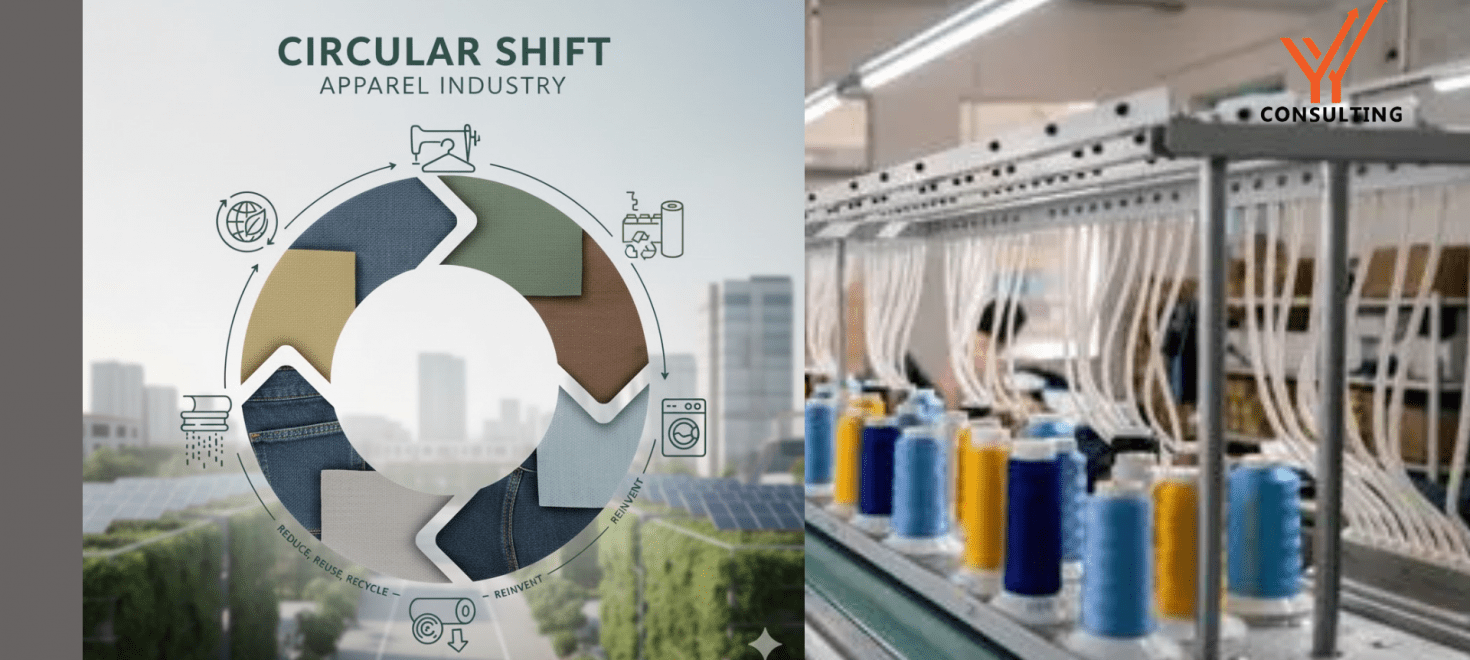
Why Linear Supply Chains Are Obsolete in a Circular World
Take a moment and imagine this: A cotton T-shirt, born in a field in India, dyed in a mill in China, stitched in Bangladesh, sold in London, and discarded in Ghana. That’s the typical life cycle of apparel today — a straight line from resource to waste. But the world no longer moves in straight […]
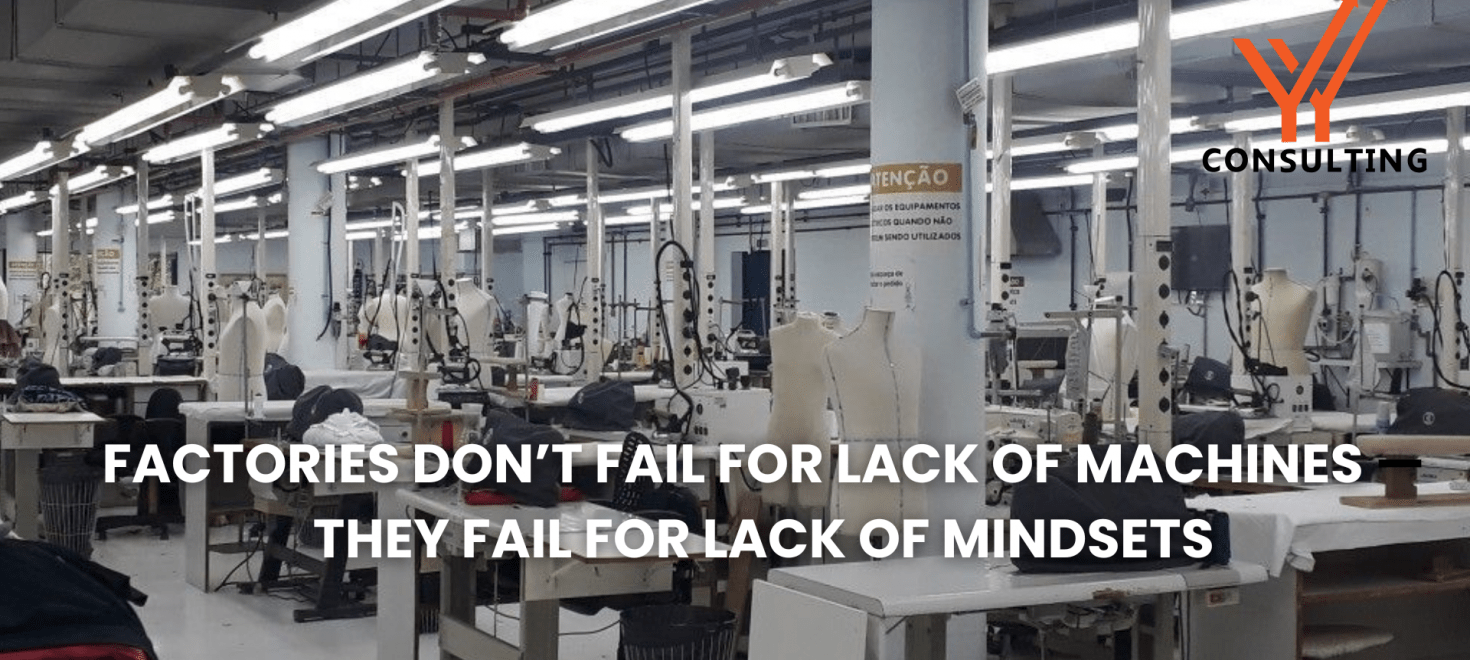
Factories Don’t Fail for Lack of Machines — They Fail for Lack of Mindsets
If you walk through any modern garment factory today, the sight is mesmerizing — laser-guided cutters, automatic collar stitchers, conveyors humming in sync, screens flashing real-time data. Everything seems futuristic. And yet, when you sit down with the management team, the conversation often circles around the same old problems: low efficiency, rework, poor communication, missed […]
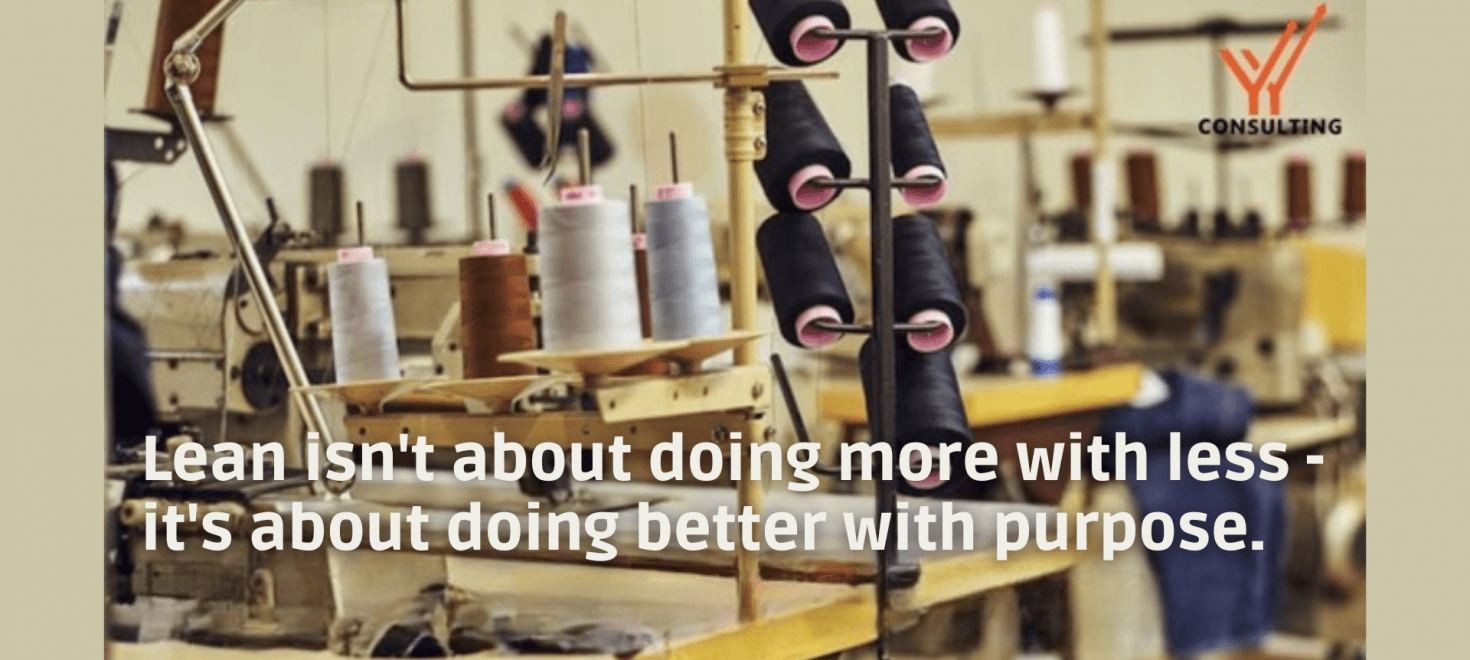
Lean & Sequential Improvement: The Backbone of Sustainable Reshoring
Introduction: The Great Return Home For decades, the apparel industry’s compass pointed east. Brands chased lower labor costs across Bangladesh, Vietnam, and China, building vast offshore supply chains that stretched thousands of miles from design studios to sewing lines. It worked — until it didn’t. Then came the pandemic, shipping chaos, and shifting consumer expectations. […]
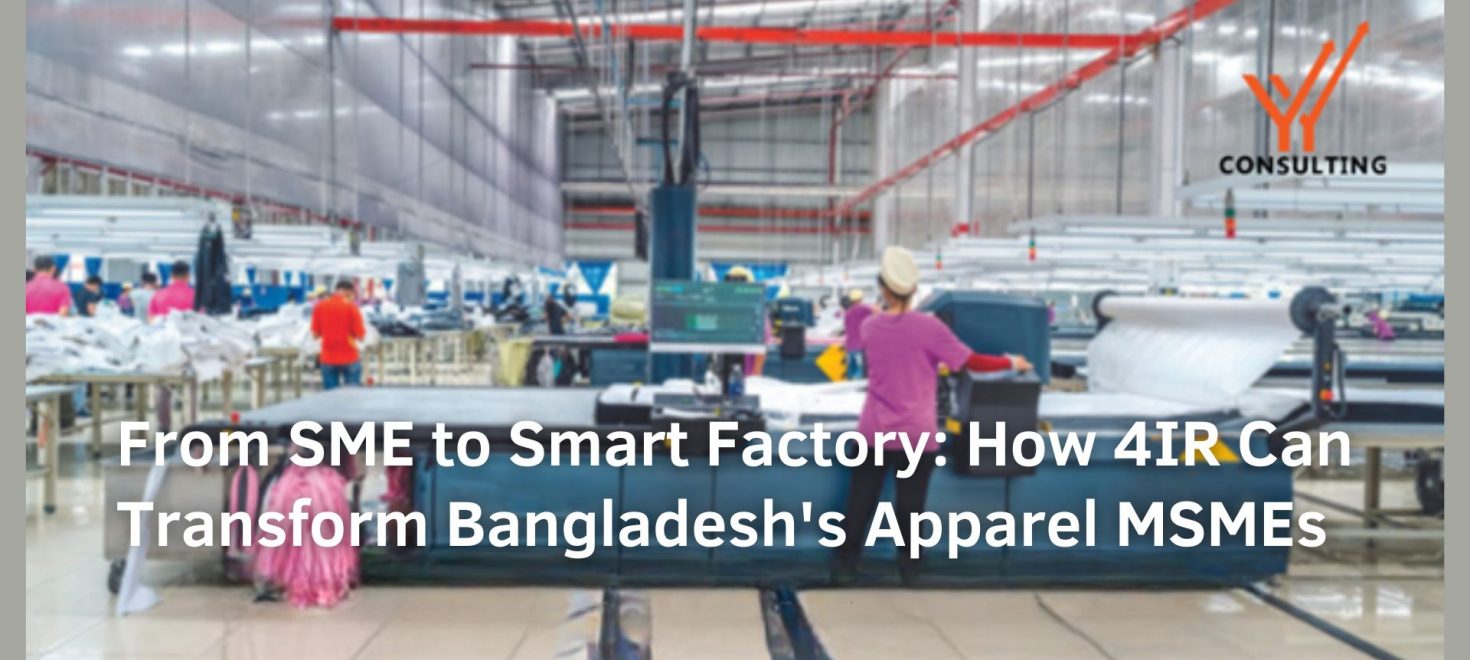
From SME to Smart Factory: How 4IR Can Transform Bangladesh’s Apparel MSMEs
Introduction: The Digital Divide in Bangladesh’s RMG Landscape Bangladesh’s ready-made garment (RMG) sector stands as one of the world’s most dynamic manufacturing ecosystems — contributing over 80% of the nation’s export earnings and employing more than four million people. Yet, beneath this global success story lies a structural paradox: while a handful of large factories […]
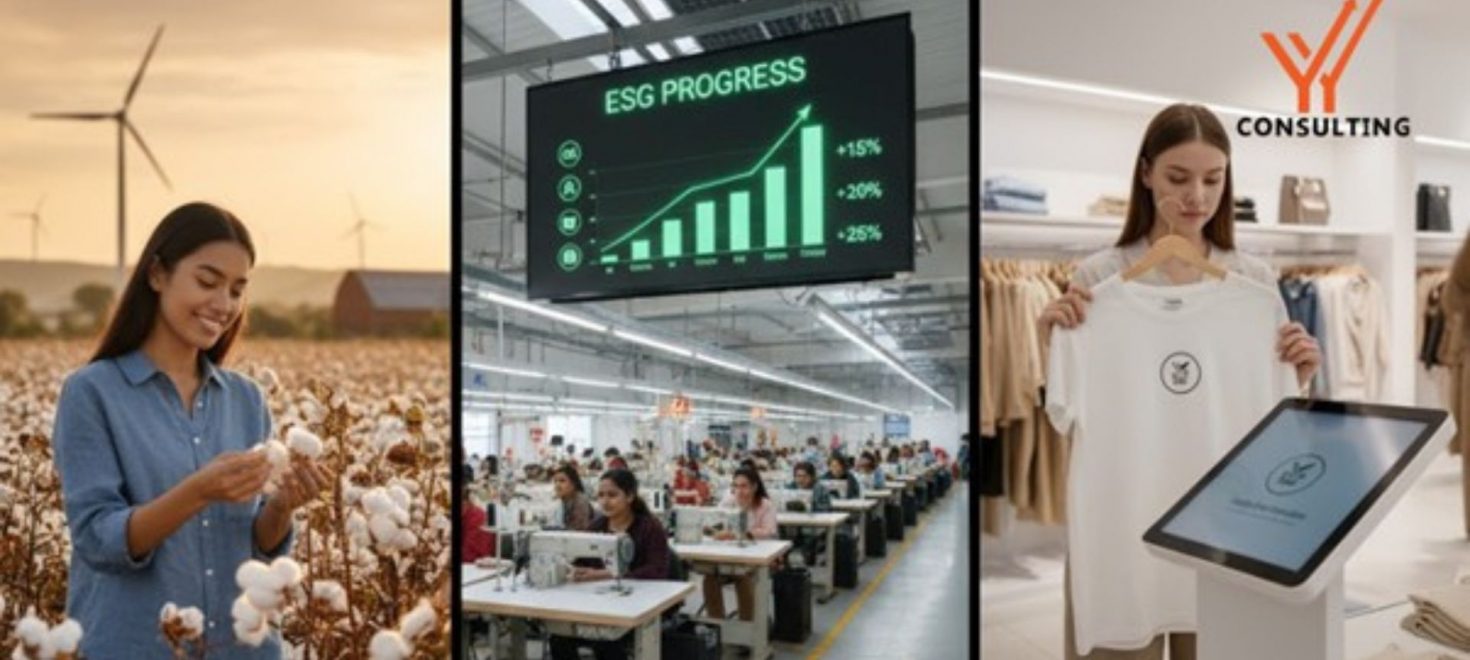
Purpose Over Profit: ESG as the New Growth Engine
Introduction The age of profit-alone capitalism is fading. Today, success in business is measured not only by margins and market share but by meaning — by the value a company creates for its people, planet, and partners. Across industries, from fashion to finance, the most forward-thinking organizations are redefining growth through a lens of purpose. […]
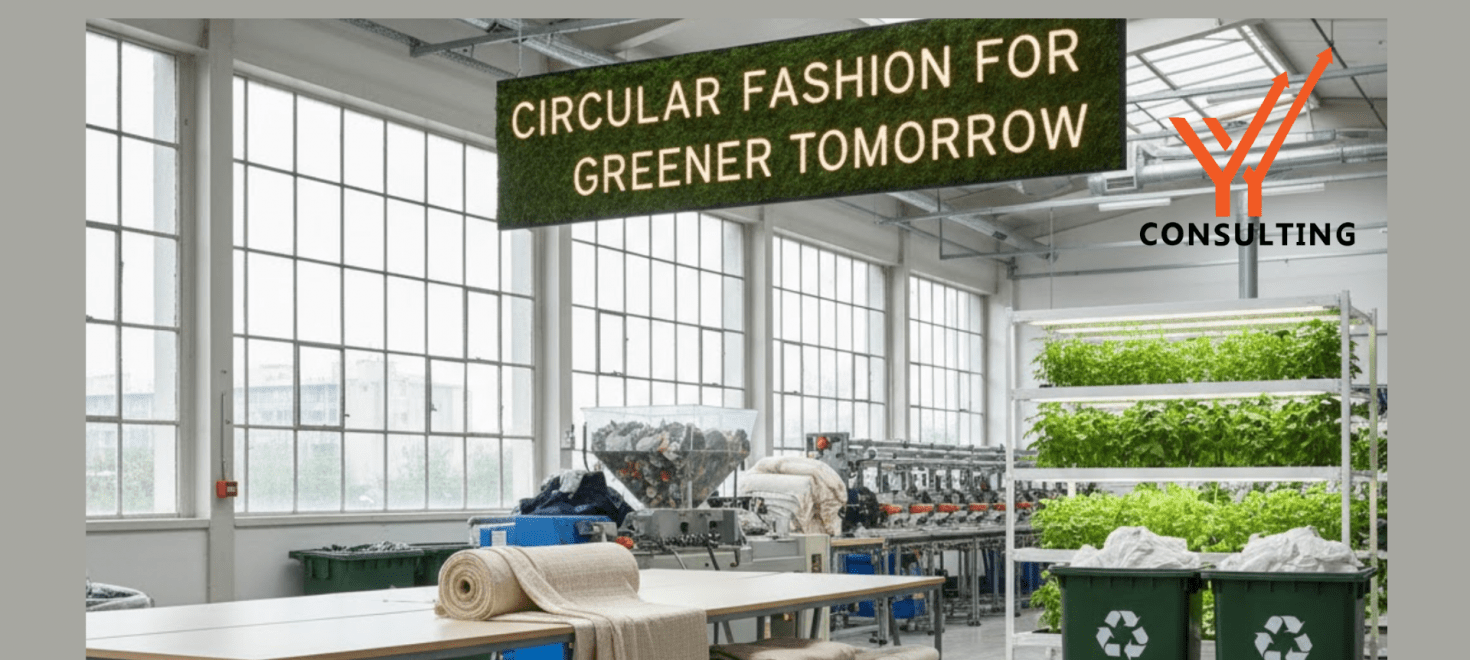
From Trend to Transformation: How Sustainability Is Redefining Fashion
The global clothing industry has been praised for its originality, elegance, and capacity to shape culture across the continents. Clothing is a worldwide language of expression, from the hottest runway trends to everyday staples. However, beneath the glitter lurks a significant challenge: the fashion business is one of the most resource-intensive and polluting in the […]
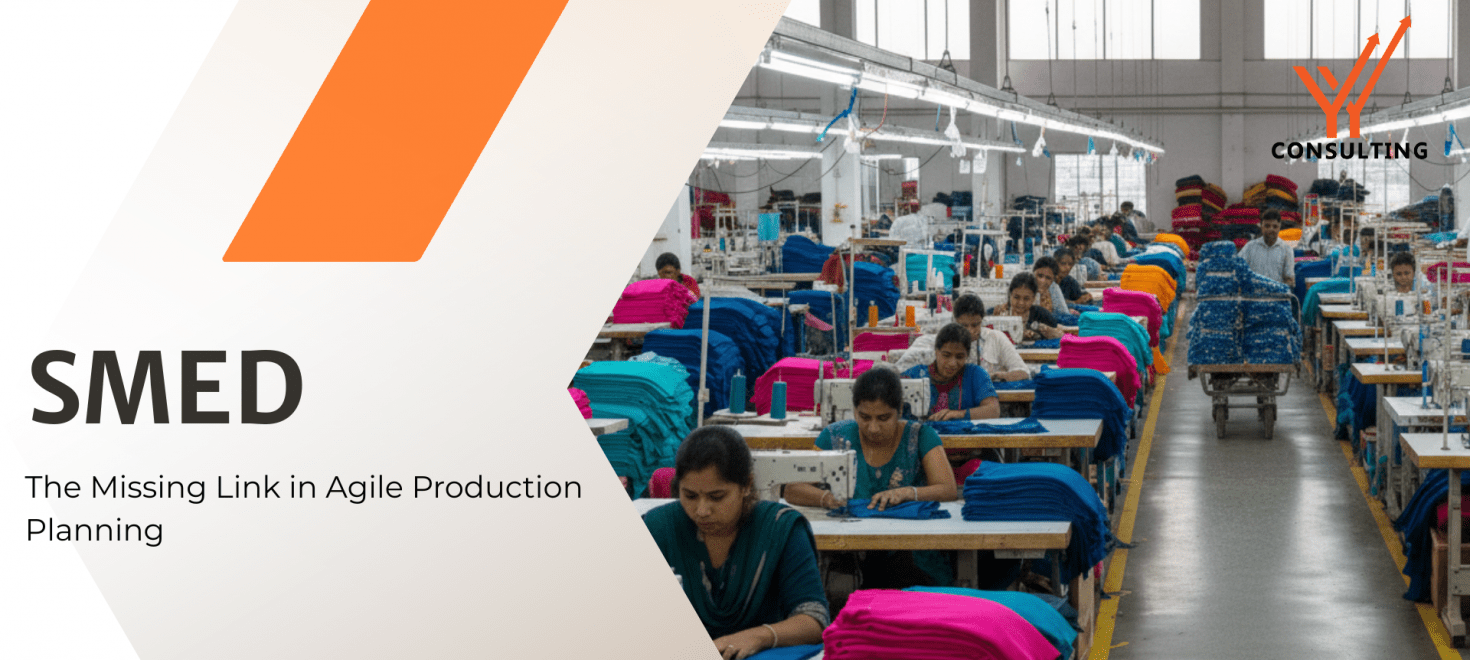
SMED in Apparel Production: The Missing Link in Agile Production Planning
How Bangladesh Can Build Faster, Flexible, and Future-Ready Apparel Factories Introduction The Bangladesh apparel industry has long been celebrated as the backbone of the country’s economy. Generating more than 84% of national export earnings and employing over 4 million workers, the sector has cemented the country’s place as the world’s second-largest garment exporter. From T-shirts […]

Artificial Intelligence in the Cutting Room: How Algorithms Reduce Waste and Improve Margins
Introduction In the fast-evolving landscape of apparel manufacturing, the cutting room holds a decisive yet often underappreciated role. While design sparks creativity and sewing brings garments to life, it is in the cutting room where profitability is truly determined. With fabric accounting for nearly 50–70% of the total garment cost, even minor inefficiencies in planning […]
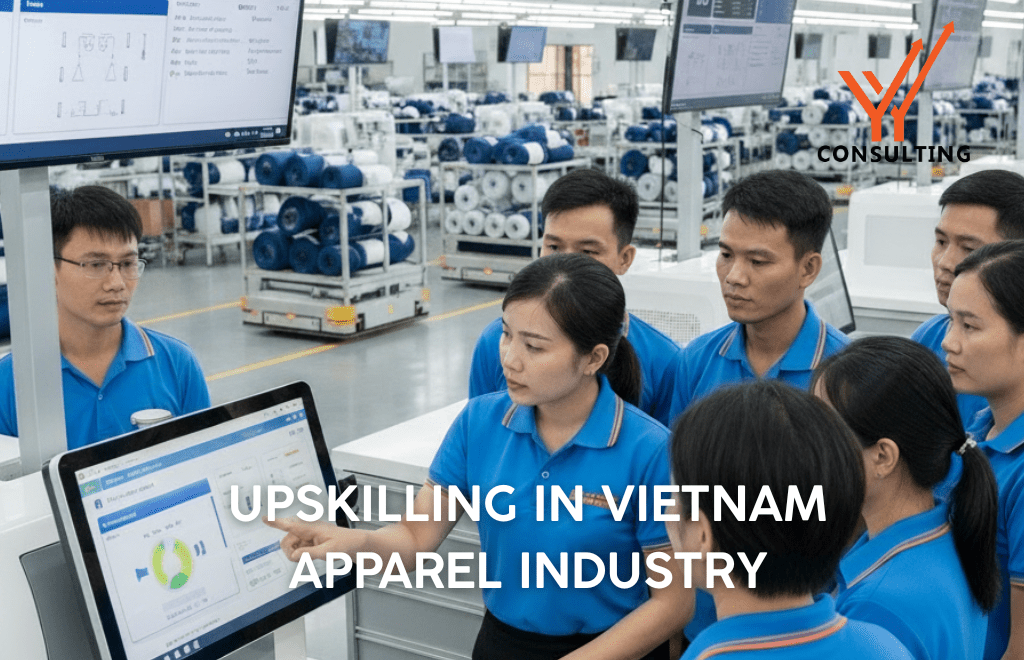
Upskilling 4.0: Training Operators for AI-Enabled Production Floors in Vietnam’s Apparel Industry
Introduction: A New Chapter in Vietnam’s Apparel Growth Vietnam’s apparel industry has long been celebrated for its resilience, scale, and ability to adapt to shifting global trade dynamics. As one of the world’s largest garment exporters, the country has built its reputation on skilled operators, competitive costs, and strong relationships with global brands. Yet, the […]

The New Supervisors: Why Data Skills Matter as Much as Sewing Experience
Bangladesh’s ready-made garment (RMG) industry has long been defined by its scale, resilience, and cost competitiveness. With over 4 million workers, the sector is not only the backbone of the national economy but also a vital part of global apparel supply chains. Traditionally, the role of a supervisor in this ecosystem has been clear: someone […]
